
White-breasted Nuthatch
The White-breasted Nuthatch (Sitta carolinensis) is a small songbird of the nuthatch family which breeds…
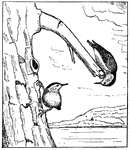
Nuthatches
The nuthatches are a genus, Sitta, of small passerine birds belonging to the family Sittidae. Characterised…

Brown Creeper
The Brown Creeper (Certhia americana), also known as the American Tree Creeper, is a small songbird,…
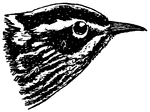
Black and White Warbler
The Black-and-white Warbler, Mniotilta varia, is a small New World warbler. It breeds in northern and…

Battleground at Concord
"Battle ground at Concord. This view, looking southeast, is from the road leading to the village, by…

Chestnut-sided Warbler
The Chestnut-sided Warbler, Dendroica pensylvanica, is a New World warbler. They breed in eastern North…

Yellow Warbler
The Yellow Warbler (Dendroica petechia) is a New World warbler. It is the most widespread Dendroica…
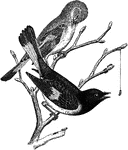
American Redstart
The American Redstart, Setophaga ruticilla, is a New World warbler. They breed in North America, across…
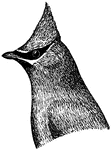
Cedar Waxwing
The Cedar Waxwing (Bombycilla cedrorum) is a member of the family Bombycillidae or waxwing family of…
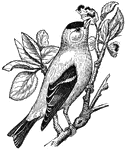
American Goldfinch
The American Goldfinch (Carduelis tristis), also known as the Eastern Goldfinch and Wild Canary, is…

Tent Caterpillars
Tent caterpillars are moderately sized species in the genus Malacosoma in the moth family Lasiocampidae.…
Tent Caterpillar Eggs
An illustration of tent caterpillar eggs. Tent caterpillars are moderately sized species in the genus…

Tent Caterpillar Cocoon
An illustration of a tent caterpillar cacoon. Tent caterpillars are moderately sized species in the…

Gypsy Moth
The gypsy moth, Lymantria dispar, is a moth in the family Lymantriidae of Eurasian origin. Originally…
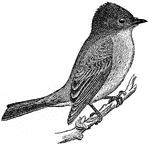
Phoebe
The genus Sayornis is a small group of medium-sized insect-eating birds in the Tyrant flycatcher family…
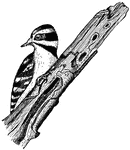
Downy Woodpecker
The Downy Woodpecker, Picoides pubescens, is the smallest woodpecker in North America. Adults are mainly…

Seal and Signature of Tryon
The seal and signature of William Tryon. Tryon was the royal governor North Carolina and New York. The…
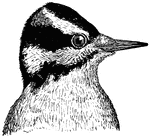
Hairy Woodpecker
The Hairy Woodpecker (Picoides villosus) is a medium-sized woodpecker. Their breeding habitat is forested…
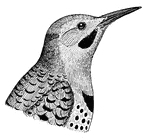
Northern Flicker
The Northern Flicker (Colaptes auratus) is a medium-sized member of the woodpecker family. It is native…
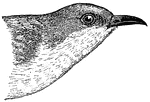
Black-billed Cuckoo
The Black-billed Cuckoo, Coccyzus erythropthalmus, is a cuckoo. Adults have a long brown tail and a…

Io Moth Caterpillar
An illustration of a Io moth caterpillar. The io moth (Automeris io) is a very colorful North American…
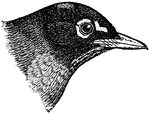
American Robin
The American Robin, Turdus migratorius, is a migratory songbird of the thrush family. It is named after…

Field Sparrow
The Field Sparrow, Spizella pusilla, is a small sparrow. Adults have brown upperparts, a light brown…
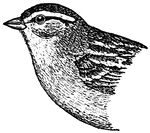
Chipping Sparrow
The Chipping Sparrow (Spizella passerina) is a species of American sparrow in the family Emberizidae.…

Vesper Sparrow
The Vesper Sparrow, Pooecetes gramineus, is a medium-sized sparrow. It is the only member of the genus…
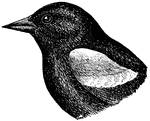
Red-winged Blackbird
The Red-winged Blackbird (Agelaius phoeniceus) is a passerine bird of the family Icteridae found in…
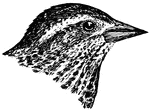
Red-winged Blackbird (Female)
The Red-winged Blackbird (Agelaius phoeniceus) is a passerine bird of the family Icteridae found in…
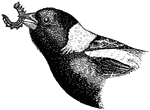
Bobolink (Male)
The Bobolink, Dolichonyx oryzivorus, is a small New World blackbird and the only member of genus Dolichonyx.…

Bobolink (Female)
The Bobolink, Dolichonyx oryzivorus, is a small New World blackbird and the only member of genus Dolichonyx.…
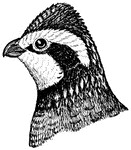
Northern Bobwhite
The Northern Bobwhite, Virginia Quail or (in its home range) Bobwhite Quail (Colinus virginianus) is…
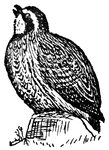
Northern Bobwhite
The Northern Bobwhite, Virginia Quail or (in its home range) Bobwhite Quail (Colinus virginianus) is…

Northern Bobwhite
The Northern Bobwhite, Virginia Quail or (in its home range) Bobwhite Quail (Colinus virginianus) is…
![The Whip-poor-will or whippoorwill, Caprimulgus vociferus, is a medium-sized (22-27 cm) nightjar from North and Central America. The Whip-poor-will is commonly heard within its range, but less often seen. It is named onomatopoeically after its call. This bird is sometimes confused[1] with the related Chuck-will's-widow (Caprimulgus carolinensis) which has a similar but lower-pitched and slower call. Adults have mottled plumage: the upperparts are grey, black and brown; the lower parts are grey and black. They have a very short bill and a black throat. Males have a white patch below the throat and white tips on the outer tail feathers; in the female, these parts are light brown.](https://etc.usf.edu/clipart/57000/57013/57013_whippoorwill_mth.gif)
Whip-poor-will
The Whip-poor-will or whippoorwill, Caprimulgus vociferus, is a medium-sized (22-27 cm) nightjar from…
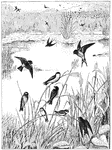
Swallow Roost
The Sand Martin (Riparia riparia) is a migratory passerine bird in the swallow family. This species…

Purple Martin (Male)
The Purple Martin (Progne subis) is the largest North American swallow at 20 cm length. Adults have…
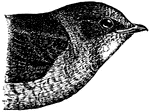
Purple Martin (Female)
The Purple Martin (Progne subis) is the largest North American swallow at 20 cm length. Adults have…

Swamp Sparrow
The Swamp Sparrow, Melospiza georgiana, is a medium-sized sparrow. Adults have streaked rusty and black…
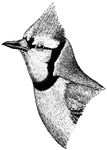
Blue Jay
The Blue Jay (Cyanocitta cristata) is a passerine bird, and a member of the family Corvidae native to…
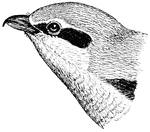
Great Grey Shrike
The Great Grey Shrike (Lanius excubitor) is a member of the shrike family. The Great Grey Shrike breeds…

Barberry
Berberis (Bér-be-ris, barberry, pepperidge bush) a genus of about 450-500 species of deciduous…
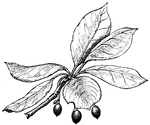
Tupelp
The tupelos, or pepperidge tree, genus Nyssa, are a small genus of about 9 to 11 species of trees with…
![Smilax is a genus of about 300-350 species, found in the tropics and subtropics worldwide. In China for example about 80 are found (39 of which are endemic), while there are 20 in North America north of Mexico[1]. They are climbing flowering plants, many of which are woody and/or thorny, in the monocotyledon family Smilacaceae, native throughout the tropical and warm temperate regions of the world. Common names include catbriers, greenbriers, prickly-ivys and smilaxes. "Sarsaparilla" (also zarzaparrilla, sarsparilla) is a name used specifically for the Jamaican S. regelii as well as a catch-all term in particular for American species. Occasionally, the non-woody species such as the Smooth Herbaceous Greenbrier (S. herbacea) are separated as genus Nemexia; they are commonly known by the rather ambiguous name "carrion flowers"](https://etc.usf.edu/clipart/57000/57029/57029_smilax_mth.gif)
Smilax
Smilax is a genus of about 300-350 species, found in the tropics and subtropics worldwide. In China…

Myrica
Myrica is a genus of about 35-50 species of small trees and shrubs in the family Myricaceae, order Fagales.…
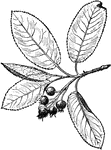
Amelanchier
Amelanchier, also known as shadbush, serviceberry, sarvisberry, juneberry, Saskatoon, shadblow, shadwood,…
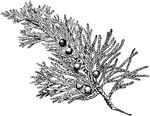
Eastern Juniper
Juniperus virginiana (Eastern Redcedar, Red Cedar, Eastern Juniper, Red Juniper, Pencil Cedar) is a…

Phoebe's Nest
An illustration of a Phoebe's nest in a box. The genus Sayornis is a small group of medium-sized insect-eating…
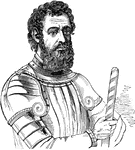
Giovanni da Verrazzano
Giovanni da Verrazzano (c. 1485 – c. 1528) was an Italian explorer of North America, in the service…

North American Bison
The American Bison (Bison bison) is a bovine mammal, also commonly known as the American buffalo. 'Buffalo'…
Forth Bridge
The Forth Bridge is a cantilever railway bridge over the Firth of Forth in the east of Scotland, to…
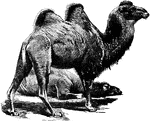
Bactrian Camel
The Bactrian Camel (Camelus bactrianus) is a large even-toed ungulate native to the steppes of north…
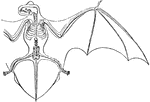
Skeleton and Wing Membranes of the Noctule Bat
The bat genus Nyctalus (Noctule bats) are Evening bats. They are distributed in the temperate and subtropical…

Great Wall of China
The Great Wall of China is a series of stone and earthen fortifications in China, built, rebuilt, and…
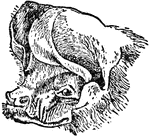
Head of Free-tailed Bat
The Big Free-tailed Bat (Nyctinomops macrotis) is a bat species found in South, North and Central America.
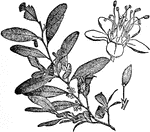
Coca Flower
Coca is a plant in the family Erythroxylaceae, native to north-western South America. The plant plays…
Coca Fruit
Coca is a plant in the family Erythroxylaceae, native to north-western South America. The plant plays…
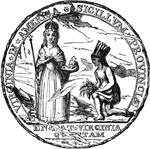
Colonial Seal of Virginia
The Colonial Seal of Virginia. An Indian kneels before a prominent royal figure.

Berkeley, Virginia (Near Harrison's Landing)
On December 4, 1619, a group of 38 English settlers arrived at Berkeley Hundred, about eight thousand…
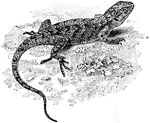
Eastern Fence Lizard
The Eastern fence lizard (Sceloporus undulatus) is a medium sized species of lizard common along the…
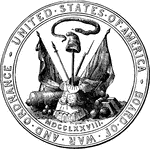
Seal of the Board of War and Ordnance
In 1776 the Board of War and Ordnance was created for issuing supplies to troops in the field, and the…
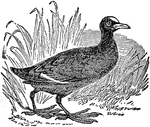
Coot
Coots , are medium-sized water birds which are members of the rail family Rallidae. They constitute…